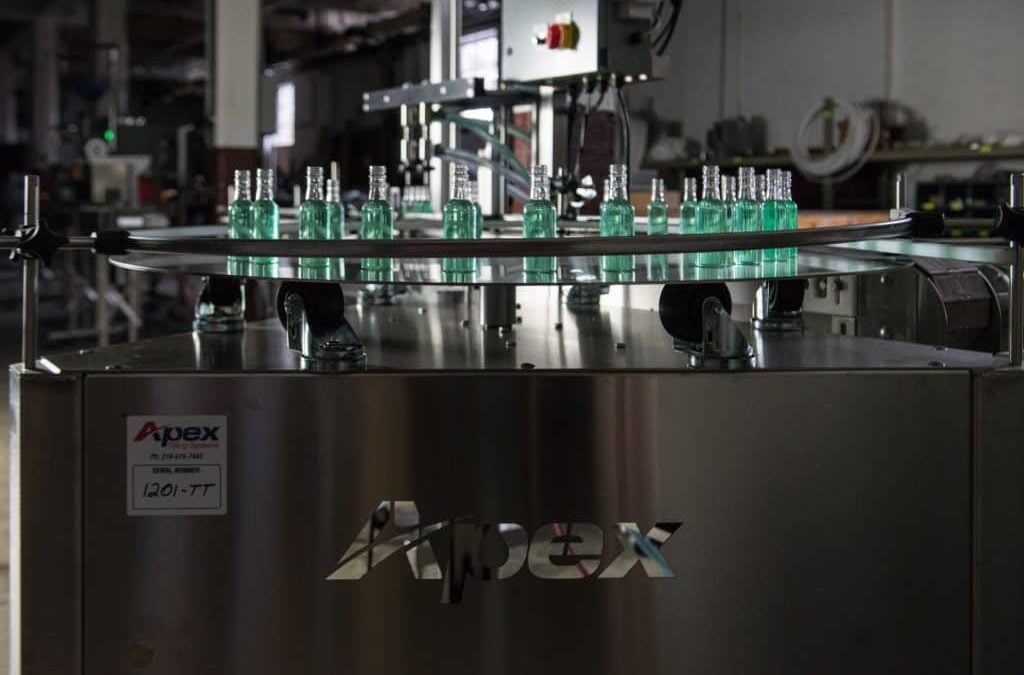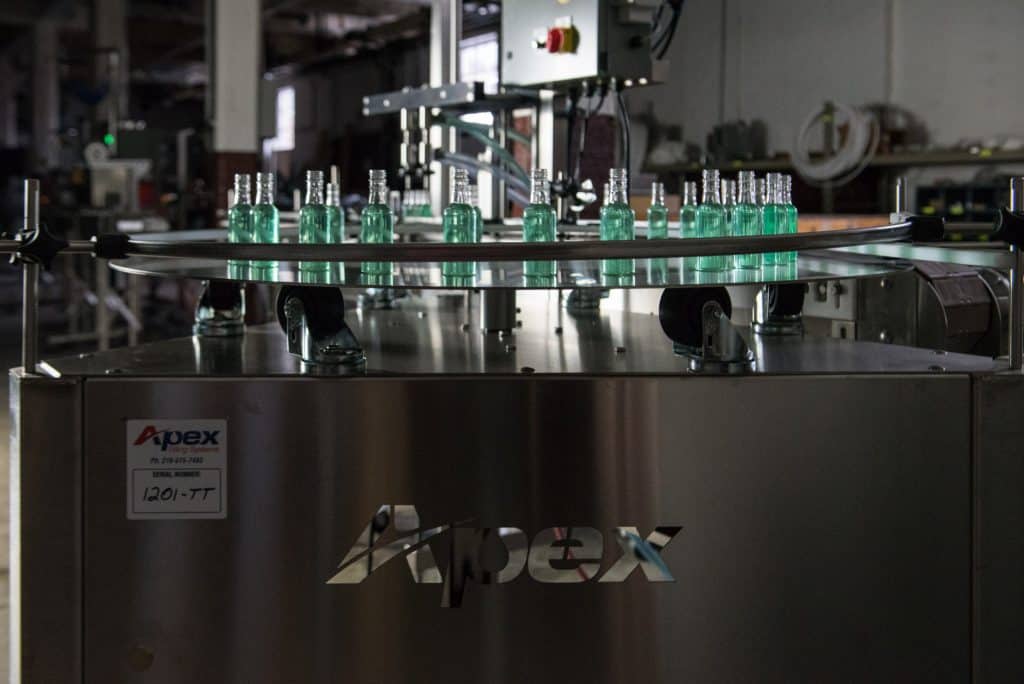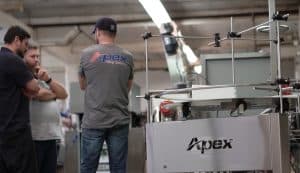Share this
6 Tips for Better Spare Parts Management
by Alicia Cannon on Jul 30, 2018

Some of the most common causes of downtime in a production facility are machine issues requiring replacement parts. If a spare part is on hand, you are likely to have your machine running and your staff back at work in a short time. However, if the replacement part needs to be ordered, you can expect to wait at least 24 hours before your system is running again. If the part is on back order, your wait may extend into days or weeks.
How to prevent downtime in a production facility
Having a comprehensive inventory of spare parts can help your business avoid these long periods of downtime. Deciding which parts to keep in inventory has its challenges. Order too many parts, or the wrong parts, and you might end up sinking capital into equipment you will never need. Read these tips below to help build an effective spare parts management system.
1. Assign a Manager
Parts management may be its own full-time position, or it may be one of many responsibilities you have already taken on, but it will work best when there is an individual on staff who is proactively keeping track of repair issues and parts needs.
2. Think Predictively, Not Just Reactively
Reactive parts management is familiar to everyone who has run out of toner ink in the middle of a printing job: you have to drop everything and buy a new cartridge before you can get back to work. In manufacturing, a broken fill head may stop production until the replacement arrives. In both cases, having the spare ready would have been less disruptive.
When managers act predictively, they will already know when certain parts will need replacement with regular use, as well as which have broken down more frequently in the past. You can plan predictively by:
- keeping records of which replacement parts are needed and when, and finding the patterns that arise in your specific facility,
- learning the regular parts replacement schedule for your equipment, and
- prioritizing which parts to order, as seen in the next tip.
There will still be a need for reactive management because no one can predict every possible situation, but predictive management can help reduce these emergency situations to a minimum.
3. Prioritize the Parts You Need
You will have a limited budget and a finite amount of space to devote to purchasing spare parts. Make your best educated guess by prioritizing the parts that fit into these categories:
- Consumables. These are parts that are expected to wear out after a certain amount of use, like a timing belt. They also include supplies that are used up in production, like cap seals or shrink sleeves. Have these on hand before you need them.
- Critical components. Without one of these parts, the entire machine has to shut down, especially if the part is related to safety.
- Custom parts/Long lead time parts. If a replacement part is readily available and can arrive at your location quickly, your downtime won’t be as bad as it will be if one of these hard-to-get pieces malfunctions.

4. Take Suggestions from Your Manufacturer
Ask if your manufacturer offers a “spare parts kit.” This collection will include the parts they know will most likely need replacing over time, and they may offer the parts at a discount. If they don’t have a pre-made kit, ask them what they would recommend.
5. Use Storage Smartly
Once you have a good collection of spare parts, be sure your staff knows how to access it. Keep all pieces labeled with their purpose and manufacturer contact information. Maintain an up-to-date inventory of what’s available so no one mistakenly orders a part that they already have. Periodically cull pieces that are no longer needed as your equipment changes. Finally, store pieces where they will not be damaged or exposed to harmful conditions.
6. Begin with Quality
Finally, always opt for quality-made parts designed specifically for your equipment. The few dollars you may save in the beginning with knock-off parts will not be worth the lost revenue if it causes your facility to shut down for several days. Another strong plus is if your supplier is located in the U.S. and can get your parts shipped to you that much faster.
Let Apex Help You
Apex offers all of our clients customized solutions to their filling needs. Call us at 219-575-7493 or visit our page here to learn about our commitment to quality and customer service.

Alicia Cannon
Integrity, honesty, and a dedication to delivering ambitious results serve as the central themes of Alicia’s career and are evident in every interaction she has with our clients. Her relationship-centered leadership style has paved the way for Apex Filling System’s culture of compassion & empathy, executed with accountability that ensures consistently great outcomes. As a learner for life, her pursuit of continuous personal and professional growth has led Apex Filling Systems to be recognized as an industry innovator in customer experience. Holding advanced degrees in the areas of engineering and management, she has a unique ability to analyze processes, identify potential problems before they arise, and develop standardized solutions to ensure every client of Apex Filling Systems enjoys a hassle-free, professional, and pleasant experience. Her leadership style has been influenced by the work of some of the most well-regarded thought leaders throughout the last 50 years. Among them are Jim Collins, Sally Hogshead, John Maxwell, and Tony Robbins.
Share this
- Help First (81)
- Apex Filling Systems (51)
- Filling Equipment (49)
- Informational (45)
- Automatic Filling Machine (38)
- Industry Insights (37)
- Packaging Equipment (31)
- About Apex (20)
- Fillers (14)
- Automatic Capping (11)
- Apex Filling (10)
- Apex (7)
- American Made Goods (6)
- Uncategorized (5)
- Apex Team (3)
- Apex Family (2)
- Absolute Truth (1)
- Apex Way (1)
- Petroleum (1)
- oil (1)
- December 2025 (3)
- November 2025 (4)
- October 2025 (5)
- September 2025 (3)
- June 2025 (3)
- May 2025 (6)
- April 2025 (10)
- March 2025 (10)
- February 2025 (12)
- January 2025 (14)
- December 2024 (1)
- November 2024 (4)
- October 2024 (4)
- September 2024 (2)
- August 2024 (1)
- July 2024 (4)
- October 2022 (1)
- September 2022 (1)
- June 2022 (1)
- October 2021 (2)
- June 2021 (1)
- May 2021 (1)
- April 2021 (2)
- March 2021 (2)
- February 2021 (1)
- January 2021 (2)
- November 2020 (1)
- October 2020 (1)
- September 2020 (2)
- August 2020 (1)
- July 2020 (1)
- June 2020 (1)
- May 2020 (1)
- April 2020 (2)
- March 2020 (2)
- February 2020 (2)
- January 2020 (3)
- December 2019 (2)
- November 2019 (6)
- October 2019 (4)
- September 2019 (3)
- August 2019 (6)
- July 2019 (2)
- April 2019 (1)
- February 2019 (1)
- January 2019 (7)
- December 2018 (6)
- November 2018 (5)
- October 2018 (2)
- September 2018 (2)
- August 2018 (1)
- July 2018 (3)
- May 2018 (2)
- April 2018 (1)
- March 2018 (2)
- February 2018 (2)
- January 2018 (2)

